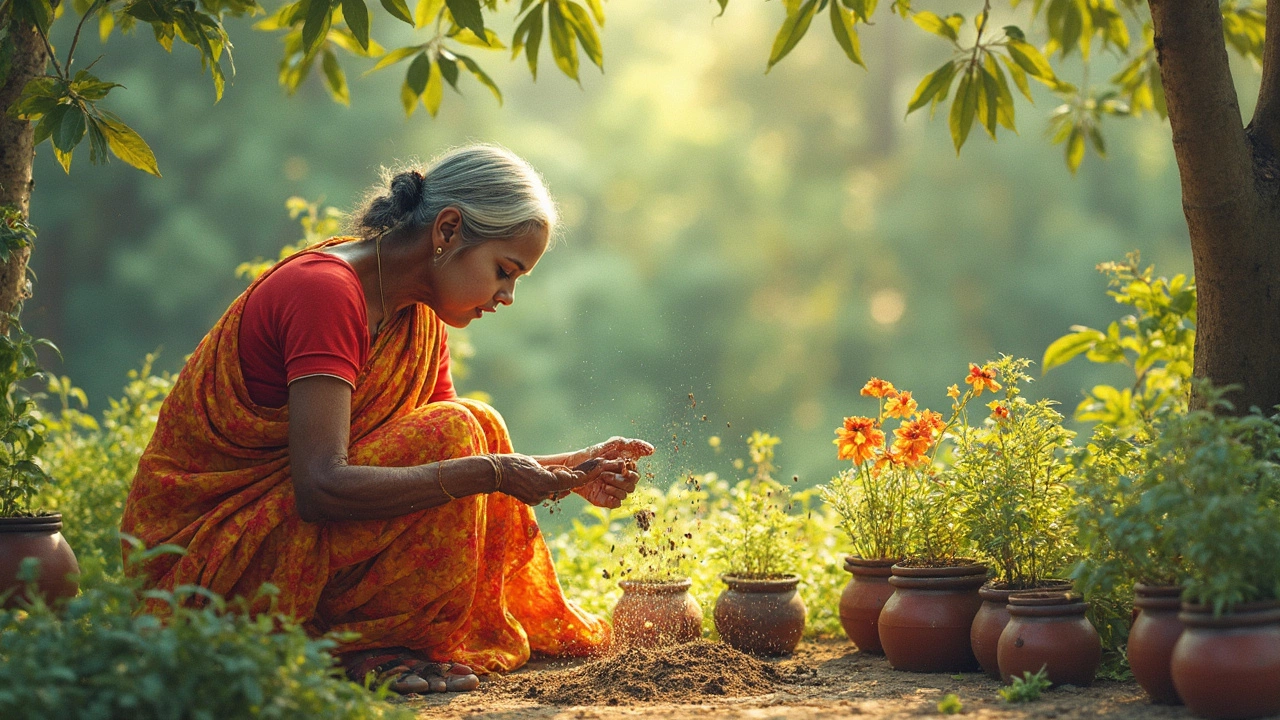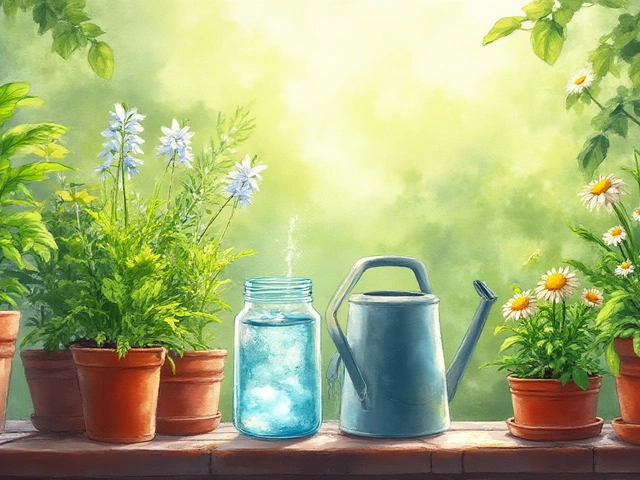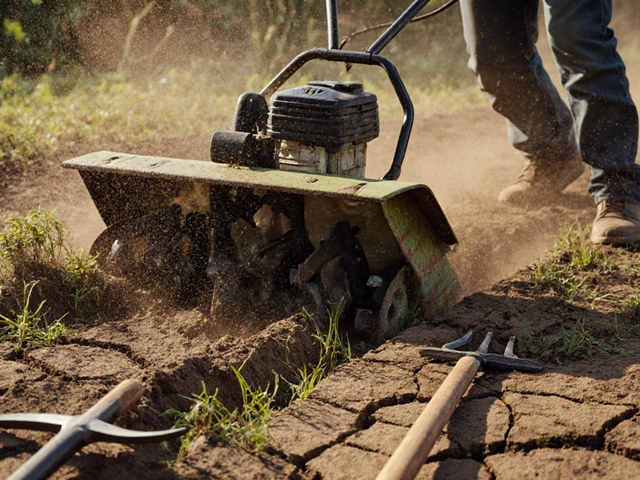Bad garden soil can make your best planting plans flop fast. Spending big bucks at the garden center isn’t the only answer—actually, it’s often the worst one. Let’s turn the stuff you already have (or can get for free) into rich, crumbly garden soil, no fancy products needed.
First, grab a handful of your garden dirt. Is it hard as a brick? Sandy like a beach? Smells funky? Each problem has dirt-cheap fixes—literally. Leftover coffee grounds, kitchen scraps, even cardboard can boost the good stuff your plants crave. The right tweaks can turn blah soil into plant paradise without burning a hole in your wallet.
- Why Your Garden Soil Needs Help
- Cheap and Free Soil Amendments You Already Have
- How to Use What’s Around You
- Mistakes That Waste Time and Money
Why Your Garden Soil Needs Help
If you’ve ever tried to grow tomatoes in plain backyard dirt and ended up with sad, spindly plants, you’re not alone. Regular soil just doesn’t cut it for most garden veggies or flowers. In fact, yard dirt is usually missing the basics: nutrients, good texture, and microbes that help roots grow strong. Most soils, even if they look decent, have some kind of hidden problem that keeps your plants from doing their best.
Here’s why your soil probably needs a boost:
- cheapest way to get great harvests is to fix your soil, not just dump on fertilizer every year.
- Clay soils drain slower than molasses, suffocating roots by holding too much water.
- Sandy soils leak water and nutrients so fast, plants are always “hungry.”
- Lots of backyard soil is low on organic matter—the stuff that feeds plants and keeps soil crumbly instead of packed hard.
Did you know plants need more than just N-P-K (that’s nitrogen, phosphorus, and potassium) to thrive? They need calcium, magnesium, and even tiny traces of copper or zinc. When gardens flop, it’s often because the soil is missing just one or two of these, not because you forgot to water.
Here’s a table showing what’s missing from typical soil types:
| Soil Type | Main Problem | What’s Usually Lacking |
|---|---|---|
| Clay | Poor drainage, compacts easily | Air space, organic matter |
| Sandy | Fast draining, dries out quick | Nutrients, moisture-holding stuff |
| Urban/backyard | Mixed junk, rocks, debris | All key nutrients, organic matter |
No matter what kind of dirt you start with, fixing it the right way saves money—fewer dead plants, no extra fertilizer, and bigger, tastier crops. In short, happy soil means happy plants.
Cheap and Free Soil Amendments You Already Have
Before you shell out money on those bags of fancy amendments, check what’s already in your kitchen or piling up in the corner of your yard. The cheapest way to fix garden soil usually comes from stuff most folks toss away. Let’s break down the best free options that actually work.
- Coffee Grounds: These aren’t just for waking you up in the morning. Sprinkle used coffee grounds into your soil to add a boost of nitrogen—plants love it. They help attract worms and improve soil texture, especially in sandy or slightly compacted soil. Just don’t go overboard; a thin layer is enough.
- Eggshells: Crushed eggshells break down slowly and deliver calcium to your beds. Tomatoes, in particular, need calcium to avoid blossom end rot. Rinse, dry, and crush the shells before digging them into the topsoil.
- Grass Clippings: After mowing, let the grass dry out a bit. Then spread a thin layer onto your garden bed. This adds organic matter and helps hold moisture where roots need it. Heavy, wet clumps will smother plants, so keep it loose.
- Leaves: Instead of bagging up fall leaves, shred and pile them on your beds. Leaves are packed with trace minerals and as they break down, they attract earthworms. Just avoid big mats that block water and air.
- Compost: Don’t overthink it—compost can be as simple as rotted fruit, veggie peels, stale bread, and even shredded paper or cardboard. Skip meat and dairy (they attract pests). Finished compost is dark and crumbly, and makes almost any soil better when mixed in.
- Manure from Herbivores: If you know anyone with chickens, rabbits, horses, or cows, ask for manure. Well-rotted manure (aged at least 6 months) is a time-tested soil booster. Just don’t use pet waste—it’s risky for food crops.
If you’re feeling creative, even newspaper and plain cardboard (no colored ink) work as mulch to smother weeds and break down, feeding your soil as they go. Water the soil first, lay down the sheets, then cover with grass or leaves for instant results.
Keep it simple, use what’s handy, and your soil—and wallet—will thank you.

How to Use What’s Around You
You don’t need to buy expensive potting mixes or fancy amendments. Most gardens can get a serious boost from waste you’d usually toss. Using what you already have is pretty much the cheapest way to fix your soil. Start with food scraps. Stuff like banana peels, eggshells, and vegetable ends break down fast and feed your soil with real nutrients. Bury them right in the garden or add them to a compost pile if you’ve got the patience.
Cardboard and newspaper are magic for feeding worms and loosening hard soil. Lay them down in garden beds under mulch. Just avoid the shiny, colored stuff, since that ink isn’t great for gardens. Worms love them, and happy worms mean healthier soil.
Even your lawn clippings and autumn leaves shouldn’t go to waste. Spread a thin layer (not too thick or it’ll get gross) over garden beds to keep moisture in and slowly add nutrients as they break down. Coffee grounds are great for acid-loving plants like blueberries or tomatoes, but go easy—too much can actually mess with the balance.
- Shred leaves before spreading so they break down quicker.
- Let grass clippings dry for a day so they don’t mat together and get slimy.
- Chop up food scraps if you want them to disappear faster.
You can even use ashes from plain wood fires (not charcoal with additives) to make soil less acidic. Just sprinkle a tiny bit—too much ash can do more harm than good.
| Material | Main Benefit | How to Use |
|---|---|---|
| Coffee Grounds | Adds nitrogen | Sprinkle over soil for acid-loving plants |
| Shredded Leaves | Improves texture, adds organic matter | Mix into soil or use as mulch |
| Cardboard/Newspaper | Smothers weeds, feeds worms | Layer under mulch |
| Eggshells | Adds calcium | Crush and dig in at planting time |
| Wood Ash | Raises pH (less acidic) | Add tiny amounts, mix into soil |
Keep an eye on your soil every few weeks. If the texture is better and plants look happier, you’ll know it’s working. Cheap fixes can turn into the best ones if you use them right.
Mistakes That Waste Time and Money
It’s easy to get pulled into viral hacks or shiny soil boosters, but some of the most expensive fixes are also the least useful. Let’s clear up common traps gardeners fall into, so you can keep more cash in your pocket and focus on what actually helps your dirt.
- Bagged amendments for every problem: Most garden centers push bags of compost, peat moss, or “topsoil” for every garden issue. Sure, they can help, but often your soil just needs more organic matter or a bit of local compost, not fancy bags with tiny portions.
- Too much fertilizer: Plants can’t use nutrients if the basic soil structure isn’t right. Dumping on extra fertilizer leads to runoff, wasted money, and can even damage plants.
- Lime without a soil test: Lots of folks grab lime to "sweeten" the soil, but overdoing it can backfire—too much lime hurts more than it helps if your soil’s not actually acidic. Always get your soil tested before adding lime.
- Buying "miracle" soil treatments: If it sounds too good to be true, it probably is. Gimmicky boosters rarely live up to the promises and can cost twenty times more than homemade compost.
- Ignoring free or local options: Hauling bagged amendments from the store, when leaves, grass clippings, or manure are free (or cheap) from neighbors or your city, just doesn’t make sense.
Here’s a glance at how much common store-bought fixes can cost, compared to what you can score for free or almost nothing:
| Amendment | Typical Cost (USD, per cubic foot) | Cheaper Alternative |
|---|---|---|
| Bagged Compost | $6 - $12 | Yard waste compost (free/municipal pickup) |
| Peat Moss | $8 - $15 | Shredded leaves (free in fall) |
| Garden Lime | $4 - $7 | Wood ash (free, if you use a wood stove) |
The cheapest way to amend soil isn’t in a bag or bottle. Usually, it’s using leftover stuff, free local resources, and only buying what fills a real gap. If you’re ever unsure, a quick soil test (often $10 or less at many local extension services) saves a ton of money over time compared to guessing and over-correcting with store-bought fixes.





